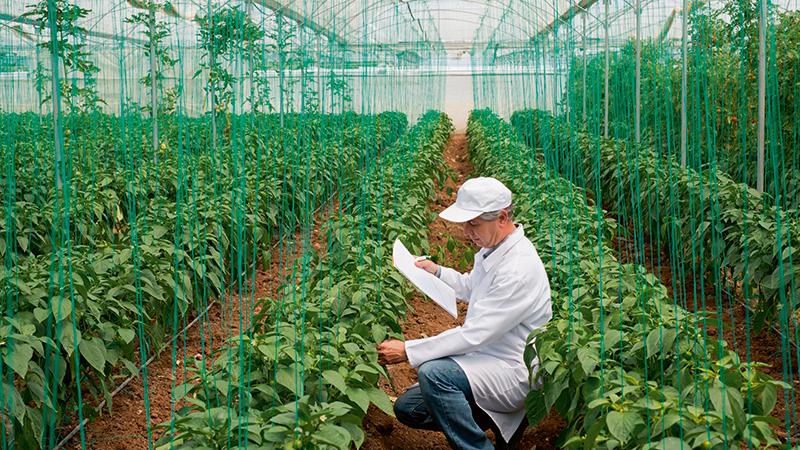Carbon dioxide measurement is required in many applications from building automation and greenhouses to life science and safety. Many technologies are used to measure CO2. Infrared (IR) sensing is the most widely applied one.
Benefits of IR sensors over chemical sensors:
- stable and highly selective to the measured gas
- a long lifetime and
- they withstand high humidity, dust, dirt, and other harsh conditions.
How to Measure CO2?
CO2 is a colorless and odorless gas that is soluble in water. It is the bubbles in the fizzy drink, a greenhouse gas, a by product of burning reactions, and in the air we exhale. CO2 is itself non-combustible and inert gas, which makes reliable measurement challenging. The most dependable method for CO2 measurements is Vaisala CARBOCAP® carbon dioxide sensor, an optical infrared measurement with ground breaking innovations. Learn more on how to measure CO2.

What Makes Vaisala’s CO2 Sensors Unique?
Vaisala uses a single-beam and dual-wavelength NDIR (Non-dispersive infrared) technology for Carbon dioxide measurement. The patented CARBOCAP® technology is used in all its CO2 sensors. This technology incorporates a unique tunable band pass filter that was developed by Vaisala and is manufactured in our own state-of-the-art cleanroom.
Measurement Excellence
The CARBOCAP® sensor allows for measurement of both the CO2 absorption signal and a reference signal using a single set of components. Because of this, Vaisala is getting a real reference measurement in every measurement cycle. This eliminates the most common drift factors normally associated with all other NDIR sensors. The results of this breakthrough are excellent long-term stability, a long service life and the ability to function in the most demanding environments, including warm, humid, and dusty environments.
Typical Applications for CO2
Vaisala CARBOCAP® instruments are well suited to a wide range of applications, from ppm (parts per million) to percentage-level CO2 measurements. Since CO2 replaces oxygen, it can be harmful to people in very high concentrations. CO2 is present at percentage levels only within closed processes such as fermentation and controlled-atmosphere storage environments. Percentage-level measurements are also typical in life-science applications such as CO2 incubation.
Why is measuring CO2 important?
Most of us know that CO₂ is a colorless, odorless gas that’s soluble in water and often seen as the bubbles in fizzy drinks. But it’s also a greenhouse gas, a by-product that’s released when we burn materials containing carbon, as well as a gas formed in the respiratory and metabolic processes of living organisms, which can also be considered slow burning reactions. As CO₂ is always a result of a burning reaction, it is non-combustible and inert. At temperatures below -79 °C (-110 °F) CO₂ becomes solid, and then it’s known as dry ice, which is typically used in transportation or cargo of frozen goods. All of the above characteristics have an impact on the benefits of Carbon dioxide measurement.
CO₂ in indoor air
To keep the CO₂ concentration at the recommended level of below 1000 ppm inside places like office buildings, hospitals, and schools, it’s important to control it, which can be done with a building automation system. In colder climates controlling CO₂ levels saves energy and helps to maintain optimal air quality, which has a direct impact on the wellbeing and efficiency of employees occupying the space.
CO₂ in greenhouses
In some applications it’s desirable to keep the CO₂ concentration at a higher level than the ambient concentration of about 400 ppm CO₂. In greenhouses, for example, CO₂ is used as a fertilizer for the plants. To optimize yield, it’s important to maintain optimal levels of CO₂: it’s expensive to use as a fertilizer and excessive use increases costs, but not the harvest.
CO₂ in incubators
CO₂ incubators, or the growth or storage chambers for biological samples, are critical applications, where the CO₂ levels are kept elevated, often at 5 %CO₂, which together with elevated temperature and high humidity ensure optimal growth conditions for the specimens. These both are typical measurement and control applications for CO₂ as it’s not possible to cultivate cells if the CO₂ levels are inaccurate.
In addition to the examples discussed above, CO₂ measurement is often needed for safety reasons in any location where CO₂ is produced, used, or stored. Vaisala has a wide range of dedicated CO₂ measurement instruments ideal for specific applications without frequent calibration needs.
Application Areas:
CO2 measurement in chicken farms
Application Areas
Life science incubators
Cold storage facilities
Food & beverage, fruit and vegetable transportation
Fermentation & brewing
Agriculture: greenhouses, mushroom farms, animal husbandry (hatchers, egg setters)
Ecological measurements, for example, soil respiration and ambient CO2 measurement
HVAC
Packaging
View our range of Vaisala Monitoring products here
